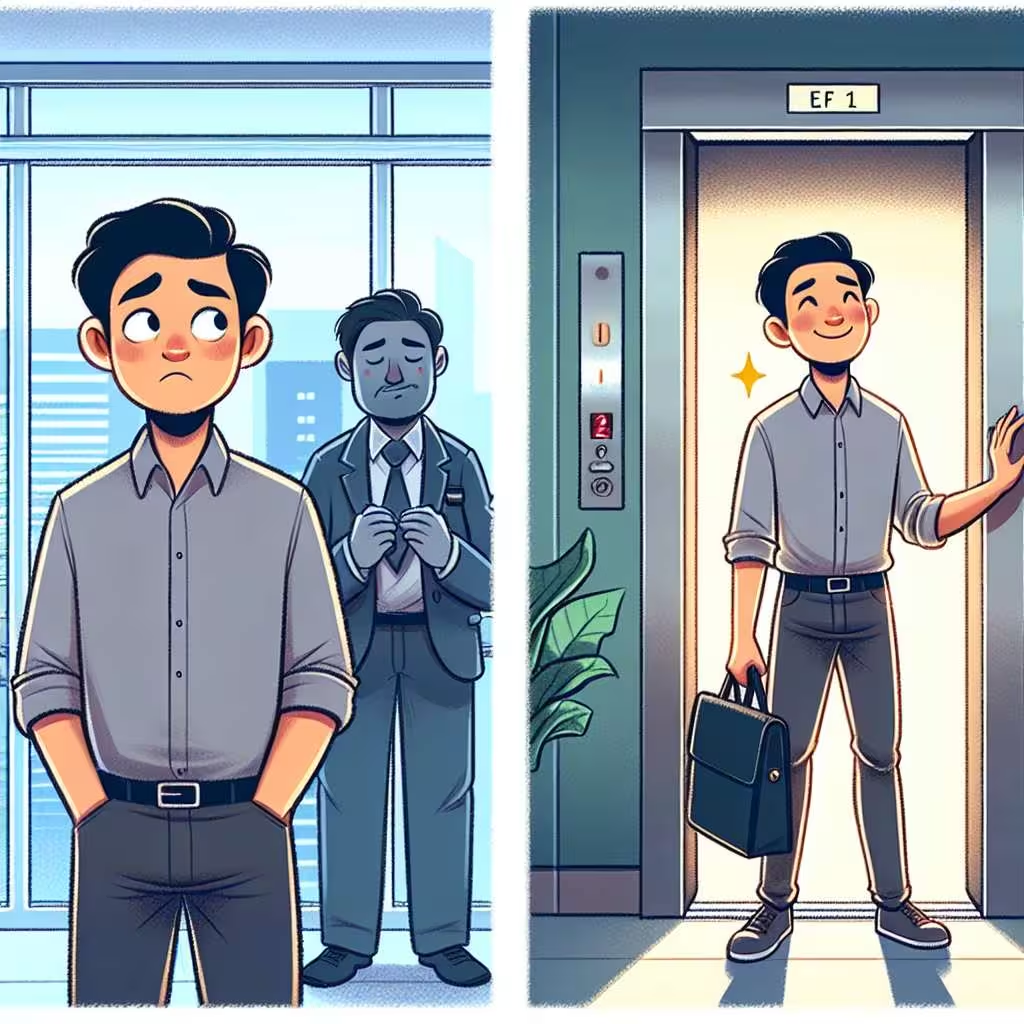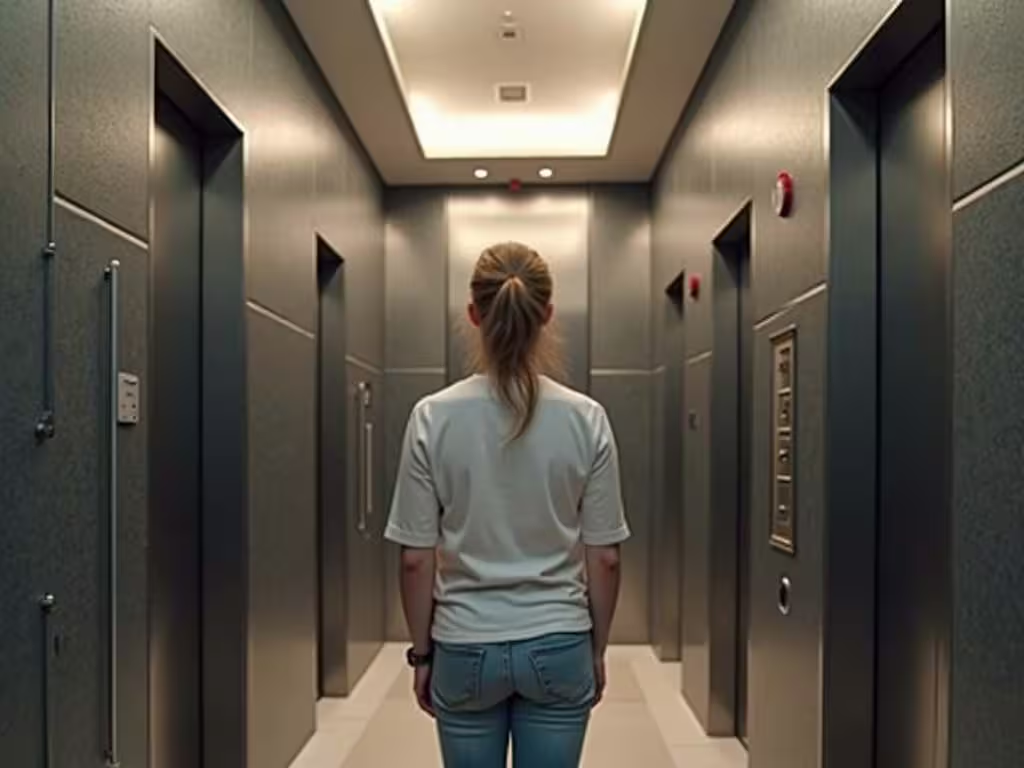At Curvspace, we understand that elevators are an integral part of modern architecture and daily life. However, for many, these vertical transportation devices can evoke a range of negative emotions. By exploring these feelings and their root causes, we aim to transform your elevator experience from one of anxiety to one of comfort and even enjoyment. Our goal is to help you navigate these spaces with confidence, enhancing your overall well-being and quality of life in the built environment.
Reader Disclosure
Jump to:
The Emotional Landscape of Elevator Rides
Elevators, despite their ubiquity and convenience, can trigger a spectrum of negative emotions in many individuals. These feelings often stem from deep-seated fears, past experiences, or even societal influences. Let’s delve into some of the most common negative emotions associated with elevators and explore their potential origins.
Fear and Anxiety
Fear and anxiety are perhaps the most prevalent negative emotions experienced in elevators. These feelings can manifest in various ways, from mild unease to full-blown panic attacks. The roots of elevator-related anxiety are diverse:
- Claustrophobia: The confined space of an elevator can trigger feelings of being trapped or suffocated1.
- Acrophobia: For those with a fear of heights, ascending in an elevator can be particularly distressing.
- Loss of control: The inability to control the elevator’s movement can lead to feelings of helplessness.
- Past traumatic experiences: Previous negative encounters in elevators can create lasting anxiety.
Discomfort and Awkwardness
Social discomfort is another significant source of negative emotions in elevators. The close proximity to strangers in a small, enclosed space can lead to:
- Social anxiety: Feeling self-conscious or worried about interacting with others.
- Awkwardness: Not knowing where to look or how to behave in the confined space.
- Invasion of personal space: Feeling uncomfortable with the lack of physical distance from others.
Impatience and Frustration
In our fast-paced world, elevators can sometimes feel like an inconvenience:
- Waiting times: Long waits for elevators, especially during peak hours, can lead to frustration.
- Slow ascent/descent: Particularly in tall buildings, the journey can feel tediously slow.
- Frequent stops: In busy buildings, frequent stops at multiple floors can be irritating.

What You’re Missing Out On
By allowing these negative emotions to dominate your elevator experiences, you might be missing out on several positive aspects:
- Opportunities for brief social interactions
- Moments of calm and reflection in a busy day
- Appreciation of architectural design and engineering marvels
- Chance to practice mindfulness and presence
Embracing Positive Emotions
Instead of focusing on negative feelings, let’s explore the positive emotions we could cultivate during elevator rides:
Curiosity and Wonder
Elevators are marvels of engineering. By shifting our perspective, we can experience:
- Fascination with the technology that allows us to ascend great heights effortlessly.
- Appreciation for the architectural design of the building and how elevators fit into it.
- Wonder at the views from glass elevators in tall buildings.
Gratitude and Convenience
Elevators make our lives significantly easier. We can cultivate gratitude by:
- Acknowledging the time and energy saved by not climbing stairs.
- Appreciating the accessibility elevators provide for those with mobility challenges.
- Recognizing the role of elevators in enabling the construction of tall buildings and dense urban environments.
Calm and Mindfulness
Elevator rides can be opportunities for brief moments of mindfulness:
- Using the time to take deep breaths and center oneself.
- Practicing presence by fully experiencing the sensations of the ride.
- Using the brief pause in our day for self-reflection
Transforming Your Elevator Experience
Now that we’ve explored both negative and positive emotions associated with elevators, let’s discuss strategies to shift our mindset and behavior for a more positive experience.
Mindset Shifts
- Reframe the experience: Instead of viewing elevator rides as a necessary evil, see them as brief opportunities for rest or reflection.
- Challenge irrational fears: Educate yourself about elevator safety statistics to combat unfounded anxieties2.
- Practice gratitude: Consciously focus on the convenience and accessibility that elevators provide.
Social Etiquettes
- Respect personal space: Position yourself to maximize distance between passengers when possible.
- Offer a smile or nod: A simple acknowledgment can ease social tension.
- Be considerate: Hold the door for others, but don’t force it to stay open too long.
Behaviors for Positive Experiences
- Practice deep breathing: Use the ride as an opportunity for a quick relaxation exercise.
- Engage your senses: Notice the textures, sounds, and movements of the elevator.
- Set an intention: Use the brief ride to mentally prepare for your next task or meeting.
Tracking Your Progress
As you implement these strategies, you may start noticing improvements in your elevator experiences. Here are some ways to track your progress:
- Emotion journal: Keep a brief log of your emotions before, during, and after elevator rides.
- Physical symptoms check: Note any changes in physical stress responses like increased heart rate or sweating.
- Behavior changes: Observe if you’re less likely to avoid elevators or if you’re more comfortable during rides.
Examples of Progress
- Week 1: “I still felt anxious, but I managed to take deep breaths throughout the ride.”
- Month 1: “I caught myself appreciating the elevator’s efficiency today instead of dreading the ride.”
- Month 3: “I had a pleasant conversation with a stranger in the elevator – something I never would have done before.”
As you continue to practice, you may find that positive emotions become your default response to elevator rides. Remember, progress isn’t always linear, and it’s okay to have setbacks. The key is to keep practicing and be patient with yourself.

People Also Ask
How common is elevator phobia?
While exact statistics vary, it’s estimated that about 2-3% of the population experiences some form of elevator phobia
Are elevators really safe?
Yes, elevators are extremely safe. The probability of an elevator accident is about 0.00000015% per trip, making them one of the safest forms of transportation
How can I calm myself quickly in an elevator?
Try the 4-7-8 breathing technique: Inhale for 4 seconds, hold for 7 seconds, and exhale for 8 seconds. Repeat as needed.
Conclusion
Transforming our emotional experiences in elevators is not just about overcoming fear or discomfort; it’s about embracing opportunities for growth, mindfulness, and connection in our daily lives. By shifting our perspective and practicing positive behaviors, we can turn these brief vertical journeys into moments of calm, reflection, or even joy. Remember, every elevator ride is a chance to elevate not just your physical position, but your mental and emotional state as well.
References
- Radomsky, A. S., Rachman, S., Thordarson, D. S., McIsaac, H. K., & Teachman, B. A. (2001). The Claustrophobia Questionnaire. Journal of Anxiety Disorders, 15(4), 287-297.
- American Psychiatric Association. (2013). Diagnostic and statistical manual of mental disorders (5th ed.). Arlington, VA: American Psychiatric Publishing.
Show & Tell
We’d love to hear your thoughts about these ideas! Simply click the link to head over to your favorite platform and add your comments about this post there. We’d like to know about your insights, questions, or just saying hi.
Disclosure
Our content is reader-supported. This means if you click on some of our links, then we may earn a commission. Commissions do not affect our editor’s opinions or evaluations. Learn more about our editorial process.

About the Editorial Staff
The Curvspace editorial team comprises a diverse group of experts on intermediate and threshold spaces in homes and workplaces. Architects and interior designers, civil engineers and artists, environmental and behavioral psychologists, sociologists and anthropologists. All collaborate to create helpful content, that explores the full potential of these often-overlooked areas to enhance our daily lives.


